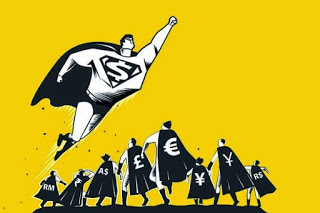
We felt strongly that the FOMC minutes would be more hawkish than the statement that followed the meeting, and we were not disappointed. However, our caveat remains: the minutes dilute the signal that emanates from the Fed’s leadership, Yellen, Fischer, and Dudley.
The latter two speak in the NY morning. Fischer and Dudley’s comment will be scrutinized for confirmation of the hawkish read of the FOMC minutes. Yellen speaks at Harvard at the end of next week. Her comments at the Economic Club of NY at the end of March squashed the earlier discussion by several regional presidents about the appropriateness of a hike last month.
Many observers may not sufficiently appreciate the unique organization structure of the Federal Reserve and how one typically becomes a regional Fed president. They are often confused by the cacophony of voices. We insist that the signal more often and most consistently comes from the leadership.
Many put emphasis on the statement in the minutes that indicated a majority of the Fed thought that a rate hike next month could be appropriate if there was continued improvement. That is not new. That is continues to be the Fed’s position. The FOMC minutes go on to acknowledge that there were a range of views of whether the conditions could be met by June.
Combining the two elements here suggests nothing new materially has been revealed. Nevertheless, we recognize something important is taking place. Some have expressed concern about the Fed’s credibility and capability of raising interest rates again. Several large pools of capital have announced preference for no yielding gold to dollar-denominated paper.
There was a large gap between what the Fed was saying was likely to be appropriate (two hikes) and what the investors thought probable (not always fully convinced of one). This gap threatens to limit the Fed’s degrees of freedom without risking market disruption. The Fed has regained the upper hand here. It has reasserted its ability to hike rates in June. Moreover, the response by the dollar and the interest rate markets suggests monetary policy still matters.
The implied yield of the June Fed funds futures contract is 41 bp. Currently, the effective Fed funds rate is 37 bp. This implies about a 30% chance of a hike is now discounted. Yet given the potential for a significant market disruption emanating from the UK referendum, which some Fed officials have already referred to, the risk/reward from a policy making point of view would likely be willing to wait six weeks.












Leave A Comment